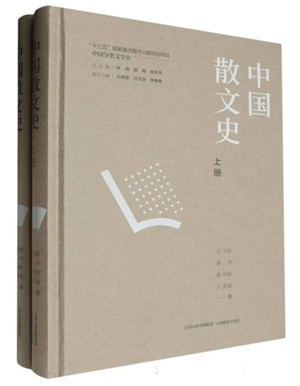


Depicting multicolored Chinese prose art in history

The History of Chinese Prose
Among the various literary genres, the history of Chinese prose is arguably the most challenging to compile. Known for its broad scope, diverse styles, and countless masterworks, China stands out as a major force in prose. The History of Chinese Prose, by Wang Wending, a professor from the College of Chinese Language and Literature at Fujian Normal University (FJNU), among others, narrates the elaborate and vibrant history of Chinese prose over more than three millennia.
The book summarizes the general development trend of Chinese prose from the pre-Qin era (prior to 221 BCE) to the end of the 20th century into five distinct periods: the foundational era during the pre-Qin era and the Han Dynasty (206 BCE–220 CE), the transformation period of prose differentiation during the Wei, Jin, Southern and Northern Dynasties (220–589), the golden age in the Tang (618–907) and Song (960–1279) dynasties, the evolution of ancient prose in the Yuan (1271–1368), Ming (1368–1644), and Qing (1644–1911) dynasties, and the rebirth and flourishing of modern prose in the 20th century.
Given the historical fact that Chinese prose has a multitude of styles and wide applications, the book adopts a broad definition of prose, focusing primarily on free-form essays while also considering pianwen [parallel prose], and cifu [prose poems], covering various types of prose including narrative, argumentative, and lyrical pieces. It centers on the development context of prose as it evolved from practical to aesthetic, from free-form articles to literary prose, and from classical to modern. The development of free-form prose began with the historical essays and philosophical writings of the pre-Qin era, underwent differentiation into rhythmic and parallel prose during the Han, Wei, Jin, and Southern and Northern Dynasties, reached a comprehensive development and artistic peak in classical prose during Tang and Song, and continued to evolve and transform through the Yuan, Ming, and Qing dynasties. The replacement of classical Chinese prose by vernacular prose around the May Fourth Movement in 1919 marked the start of a new path for modern prose development.
While clarifying the main currents of prose development, the book also examines cifu and pianwen as tributaries of Chinese prose from the perspective of stylistic intersection. For example, in the literary arena of Tang and Song, classical prose, pianwen, and cifu coexisted in a state of confrontation and interaction. Although classical prose ultimately prevailed, it did not completely dominate. Pianwen and cifu also evolved and developed in competition with classical prose, as evidenced by the works of renowned literary figures such as Liu Zongyuan, Ouyang Xiu, and Su Shi.
Wang Bingzhong is a professor from the College of Chinese Language and Literature at FJNU.
Editor:Yang Lanlan
Copyright©2023 CSSN All Rights Reserved